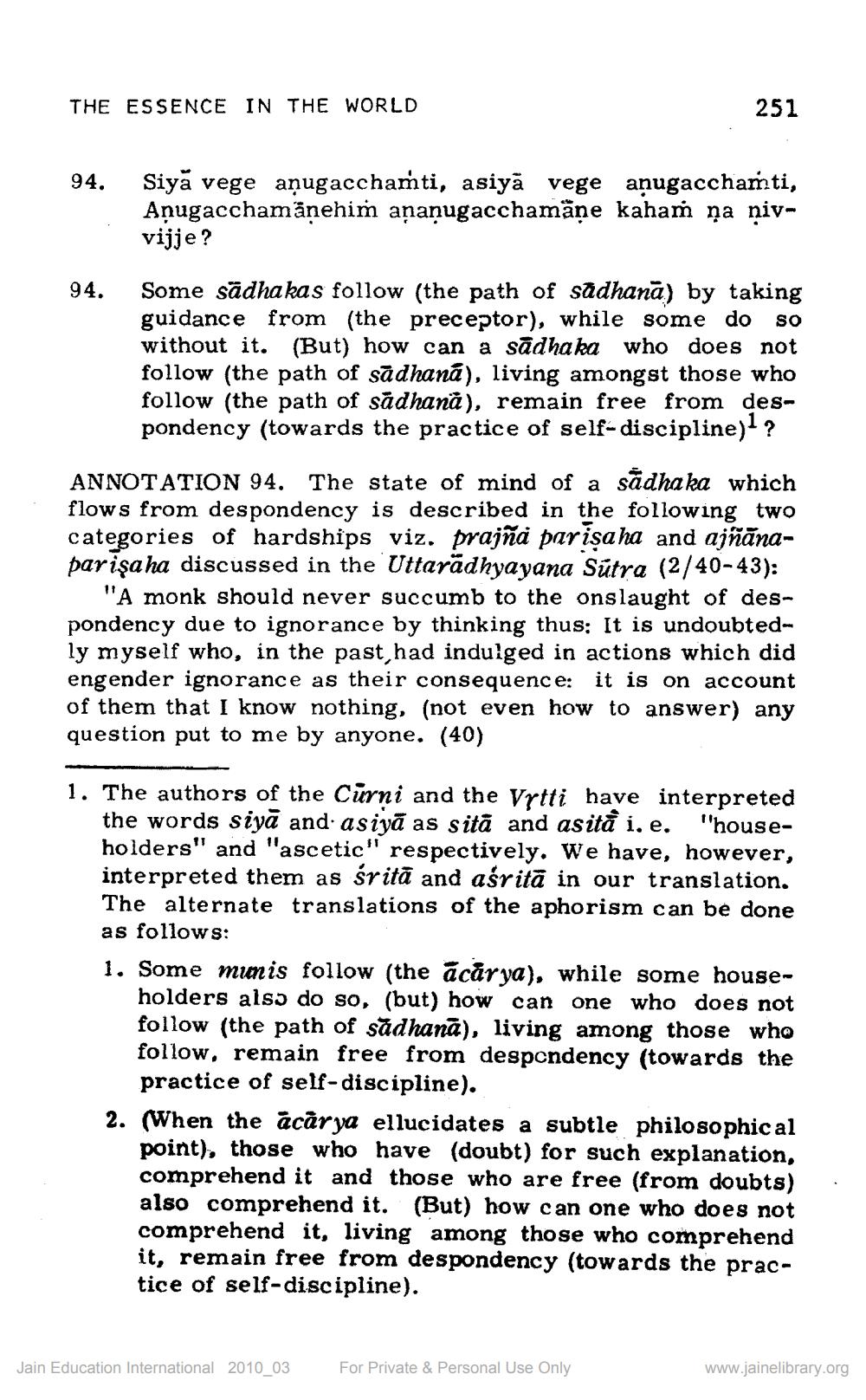________________
THE ESSENCE IN THE WORLD
251
94.
Siya vege anugacchamti, asiyā vege anugacchamti, Anugacchamanehim ananugacchamâne kahań na niyvijje?
94.
Some sädhakas follow (the path of sadhana) by taking guidance from (the preceptor), while some do so without it. (But) how can a sādhaka who does not follow (the path of sādhaná), living amongst those who follow (the path of sadhana), remain free from despondency (towards the practice of self-discipline)?
ANNOTATION 94. The state of mind of
zka which flows from despondency is described in the following two categories of hardships viz. prajña parisaha and ajñānaparişaha discussed in the Uttarādhyayana Sútra (2/40-43):
"A monk should never succumb to the onslaught of despondency due to ignorance by thinking thus: It is undoubtedly myself who, in the past, had indulged in actions which did engender ignorance as their consequence: it is on account of them that I know nothing, (not even how to answer) any question put to me by anyone. (40)
1. The authors of the Cürni and the Vytti have interpreted
the words siya and asiyā as sitā and asită i.e. "householders" and "ascetic" respectively. We have, however, interpreted them as sritā and asritā in our translation. The alternate translations of the aphorism can be done as follows: 1. Some mimis follow the ācārya), while some house
holders also do so, (but) how can one who does not follow (the path of sădhanā), living among those who follow, remain free from despondency (towards the
practice of self-discipline). 2. (When the acārya ellucidates a subtle philosophical
point), those who have (doubt) for such explanation, comprehend it and those who are free (from doubts) also comprehend it. (But) how can one who does not comprehend it, living among those who comprehend it, remain free from despondency (towards the practice of self-discipline).
Jain Education International 2010_03
For Private & Personal Use Only
www.jainelibrary.org




